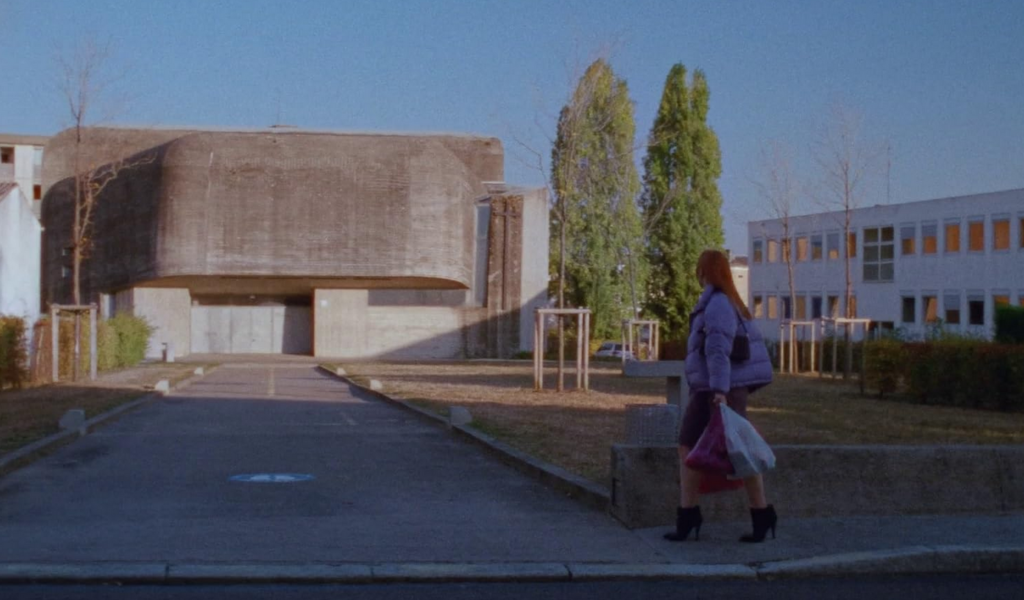How do you write a compelling short film?
The short film, either shot on a university campus or independently funded, remains a well-traveled path into the film industry. To mention a few, Steven Spielberg, Martin Scorsese, Francis Ford Coppola, George Lucas, and John Carpenter all began in this manner. Lucas and Carpenter turned their student films into low-budget movies, while the others utilized short films as business cards for production executives and producers who supported them and started their careers.
So, while everyone is making short films, the search for good, great, and exceptional ones continues – because the understanding story is still the most important art form. Every other facet of narrative filmmaking serves to assist the plot. The film cannot be made if the story is not solid. A film can be aesthetically stunning, but if the plot doesn’t work, it won’t serve you, the director, to the amount that it should. Many cinematographers and editors have strong visual imagery on their reels. However, your goal as a filmmaker — whether you’re a screenwriter, director, producer, or a combination of the three — is to create a film that makes sense as a storyline.
In this article, we talk deeply about how to write some beautiful short films.
How do you write a compelling short film?

What factors contribute to an excellent idea for a short film, or any film for that matter? An excellent short film idea must be targeted and specific. It does not have the time to delve into more than one topic in depth. An idea should be original, something we’ve never seen before. Even if the characters do not win our sympathies, they should emotionally connect the viewer in some way.
1. Keep it straightforward
The best short film plot concepts are straightforward. They are frequently told in a sentence. They concentrate on a single primary conflict, or maybe just one episode, which is explored from beginning to end. Secondary conflicts can frame a film, but the main story is most powerful when it develops or teases at its conflict early on and then maintains with it. The less it detracts into extraneous content, the greater the film will be.
The simple act of eating a salad becomes the core tension on which the entire film is centered in the Academy Award-winning live-action short film “The Lunch Date”. The concept is straightforward. An elderly woman suspects that a homeless man has stolen her lunch. The conflict and story are developed by her actions in response to her assumption.
Keeping your short film ideas straightforward can go a long way.
2. Keep your characters interesting

Characters become intriguing in a variety of ways. The nature of the character’s conflict might sometimes generate enough tension to attract our interest. We know very little about the protagonist in film 405, other than that he’s stuck on the motorway with a massive jet coming down on him and no way out. This scenario is compelling enough to keep our attention for the duration of the film which is just under 3 minutes. However, if the film lasted longer, we’d like to learn more about him.
Often in short films, a character’s conduct is what makes him interesting. The audience will define the protagonist more by how he responds to conflict, the actions he takes, and the repercussions he experiences than by anything he says or other characters say about him. You must first grasp what makes your character appealing to the audience before figuring out how to demonstrate those attributes or qualities in action.
- Also Read-How to export from Premiere Pro? For every kind of deliverable.
- Also Read-6 Tips to make a cinematic film with your smartphone
- Also Read- How to get your short film funded- Complete Guide
3. Don’t forget the conflict

In the preceding paragraph, I discussed conflict and its significance in dramatizing a story. The significance of conflict is so crucial that you will hear it again and again. Let me add that good short film narrative concepts contain more than simply the seeds of conflict: they reveal a situation in which conflict already exists. Conflict can exist as an abstract concept, a circumstance, or a venue – but it must be manifested in a conflict with characters. Characters can be animate or inanimate, but in order for us to understand the story, they must take on human dimensions.
Characters that devote themselves to trying to achieve something are the most interesting. Their wants propel them onward, and they encounter problems/conflict. The opposition can come from single or multiple characters, a physical obstacle, a troublesome difficulty, or even an inner uncertainty. Whatever the resistance is, it must be externalized and shown in relation to your primary character, the protagonist.
This contrast provides immediate tension and interest, as well as the struggle that propels the plot. Conflict in a short film might be subtle or overt. The conflict in the film The Lunch Date is subtle, already present in the class inequalities between the two protagonists and making them opposites. So, don’t forget the conflict.
4. Write emotions

Every successful short film contains emotional information, whether it’s a joke that makes us laugh or an incident that makes us cry. You’re not doing your job if you’re not reaching your audience in some way. Exceptional filmmakers analyze how they want the audience to feel about their story throughout, not just at the conclusion. As they arrange the action throughout the film, they are also plotting an emotional journey for the audience.
5. Keep it orignal
The best films, whether short or feature-length, are always innovative in some way. We may believe we’ve seen every action film, rainbow trout comedy, and family drama, but a new set of characters thrown into even the most recognizable environment may revive a genre. Consider Axel Foley in the original Beverly Hills Cop or Riggs’ suicide mission in the first Lethal Weapon. Content based on never-before-explored topics in film will have a clearly unique quality.
A new perspective on an old issue might produce a sense of newness. With a well-known plot, an unique filmic approach can do the trick. The juxtaposition of genres, such as a comedy western or a murder mystery elevated to the height of tragedy (Chinatown), might make us look at things with fresh eyes.
The venue or setting of your film can provide an element of creativity in and of itself. We’ve seen a plethora of friendship comedies set on the American road (like film, Dumb and Dumber), but Sideways feels fresh and unique simply by having its duo visit California’s central coast wine country. A rightist take on an old cultural arena can also be unique; for example, an undercover, upscale world in 1950s America. Thinking about the uniqueness of a concept ahead of time can save hours of rewrite later on. “What’s fresh,unique and orignal about my story?” should be the query. Only you have the ability to find your own vision in your next short film.
6. Keep the cinematic qualities

All good films, should go without saying, must be cinematic. They must be more than just talking heads. They must be visually appealing. This means that a good narrative film makes advantage of the unique qualities that set it apart from other narrative mediums. Books, short stories, news, plays, situational comedies, radio, and theater all rely on the written or spoken word to tell stories and convey meaning. The film’s true strength resides in its use of both sound and imagery to tell a story.
Film is distinct from these other mediums in key respects. First and foremost, I cannot overstate the importance of visuals. What we see has a profound influence on all of us, both consciously or subconsciously. With the emergence of visuals and icons in our world, the old cliche a picture is worth a thousand words is forced to keep (think especially of the computer screen). Our brains process visual data far faster than verbal information.
Though we must first prepare a script and ensure that the story develops and builds, when we enter the editing room, we frequently discover that information that required thorough explanation on the page is quickly digested in visual form. The sadness of a story about an elderly guy dealing with the loss of his plant and his disintegrating environment may be lost in script form, but when we see that elderly man, fragile and alone, on screen, his pain comes to the surface.
Films enable us to get up close and personal with our subjects. Films present stories in far greater physical richness in a shorter amount of time, and they recreate a sense of reality on screen rather than just implying it. A filmmaker’s ability to define an environment permits him to do so as completely as his talent allows.
When his picture selection creates a believable reality on the screen, the audience becomes more receptive to him and the story he conveys. We are more likely to accept the fiction that inhabits a world that mimics our reality or actually establishes its own. This allows us to enter “the world of the story” by providing a “genuine” backdrop for the encounter. Keeping the cinematic qualities alive in your short film will make it more engaging to the audience.
Another important aspect of writing a compelling short film is its fluidity or flow.
There are three types of movement: movement of character (activity), movement through space, and movement through time. The acts of characters is captured in camera.
Characters must do something in order to be fascinating to an audience. They must act in a way that the audience can understand the repercussions of their actions. What a character does determines who he is, and this is critical to comprehending narrative-driven filmmaking.
It is up to the filmmaker’s talent to employ his filmmaker’s instruments – space, light, color, sound, and time. However, the original design — the screenplay — must allow the filmmaker ample opportunity to maximize on his visual expertise. The instruments of the filmmaker are comparable to those of the painter. He creates emotive images by combining space, light, and color. He extends the span of those visuals to tell a narrative story by incorporating time and music.
7. Working on the more in-depth meaning
We have talked about alot of points on how do you write a compelling short film, but this is the most important one. All excellent films, short or long, contain a wider subject matter than merely the narrative the writer wishes to depict. This is the fundamental unifying notion, the theme of the film.
Themes address universal concepts, problems, and emotions. Love, respect, identity, compromise, duty, ambition, greed, shame, and so on are all felt and shared globally. The universality of these ideas and feelings ensures that the viewer will connect with the content on a level deeper than the plot.
A short film is an unstructured story with little meaning for the audience if it lacks a theme. The work has no purpose or significance unless this unifying factor is present. The film’s ultimate subject is the theme. Good prevails over evil, and love overcomes all; though wide, these themes express someone’s perspective on the world.
It is not necessary to have the concept fully developed when you begin, but it must be even be final draft. Themes frequently emerge or change during the writing process. You may need to write multiple drafts until you find your theme. However, as your theme arises, it’s preferable to allow it aid in the unification of the plot. The more closely your story adheres to its topic, the easier it will be to make additional choices linked to it.
More in-depth meaning emerge as a result of who you are and what you think. Your emotions, experiences, and ideas about people and the world all contribute to your finest work. To be captivating to an audience, a theme must first convince you to understand, believe, or share it, tying your individual convictions to a common ethic. It must be significant to you. You must believe in it; otherwise, no one else will.
Common Short Film Mistakes and How to Fix Them
In the realm of screenwriting, there’s always room for improvement. While it’s thrilling to pen down our ideas, often we overlook some common mistakes, especially in short films. Here’s a breakdown of these errors and how to avoid them in your writing.

1. Lack of Philosophical Conflict
Philosophical conflict is a linchpin of powerful storytelling. Without it, the story feels hollow, devoid of motivation and depth. It’s not merely about what characters are doing but why they’re doing it. For instance, the short film “Monday” portrays Kwan, an Asian American hustler, devoid of any philosophical grounding. Ensure your script dives deep into the beliefs and conflicts of your characters.
2. Absent Narrative Structure
There are two core issues: characters lacking wants and the absence of costs for their actions. The essence of a dramatic narrative is character momentum, meaning they should have a clear direction or goal. Using the film “Union County” as an example, its story lacks momentum as we only observe the protagonist’s mundane routine of drug recovery. The key? Clearly define what your characters desire and highlight the obstacles they face.
3. Over-reliance on Exposition and Late Twists
Many short scripts delve too much into the world-building and end with a “shocking” twist. But this tactic often fails to resonate because the audience hasn’t connected with the characters or their journeys. A case in point is “Uncanny Valley” which leans heavily on visuals but lacks narrative drive. Remember, characters should be proactive early in your story, and not just at the end.
4. Off-screen Storytelling
There’s a recurring theme of events happening off-screen, leaving audiences hearing about crucial events rather than witnessing them. In “The Gatherer”, a detective’s interrogation of an arsonist is mostly expositional. The film lacks twists, challenges, or changes. To captivate your audience, show pivotal events directly, adhering to the principle – show, don’t tell.
5. Misuse of Montages
Montages can be effective but are frequently misused in short films. They often serve as a crutch, dumping unmotivated exposition on the audience. The short film “Monday” gives a glimpse of this with a quick montage of Emma and Quan’s relationship. The solution? Limit the use of montages and focus on delivering a succinct yet full story.











Got a Question?
Find us on Socials or Contact us and we’ll get back to you as soon as possible.